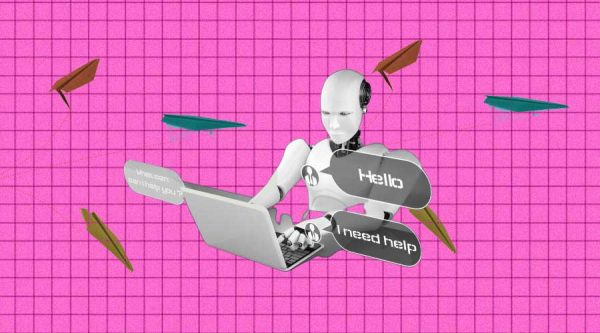While artificial intelligence and machine learning hold great potential for chatbots, there is still a long way to go before the role of a human tech support specialist or customer service representative can be completely replaced. Machine learning chatbots will undoubtedly improve greatly in the upcoming years given the large number of professionals working in the machine learning and artificial intelligence fields.
What is a Machine Learning chatbot?
Initially, chatbots were scripted software applications created to provide formulaic responses to particular questions. Since these scripted chatbots were limited in their ability to vary from pre-written responses, more unusual inquiries had to be sent to a live customer support agent. This reduced the chatbot’s utility, led to duplication of effort, raised operational costs, and irritated clients who merely desired a solution to their issues.
The development of ML and AI, in general, opened the door for new developments in chatbot technology. When machine learning was included in chatbot systems, the chatbots were able to learn over time as they responded to an increasing number of inquiries without being specifically designed to do so.
Instead of being limited to the database that they were initially designed with, this enables chatbots to respond to more dynamic queries, improving their utility and enabling them to more closely resemble human conversations.
ML Chatbots in Business
ML chatbots have a wide range of potential uses, with customer service being the most prominent. These chatbots can assist users in navigating company websites to get the data they require and provide simple answers to queries.
Like a far more complex pop-up banner, chatbots can be used expressly for e-commerce as another marketing platform to promote the sale of products and services. To increase sales, chatbots can also offer dynamic, individualized recommendations to customers who are continuously purchasing on your platform. Similar to this, chatbots can be embedded with social networking sites to actively engage with prospective consumers rather than waiting for them to visit your webpage.
Additionally, chatbots can be connected with a website, desktop application, and/or smartphone app to assist users with particular tasks and courses. They perform the role of entry-level technical support in this capacity, freeing the human technical support team to concentrate on more complicated problems.
To automate more repetitive chores like entering personal information, chatbots can also be integrated with customer and employee onboarding procedures. Instead of static surveys that show the same queries to everybody, chatbots can be employed to run active surveys and collect vital customer or staff data dynamically.
Source: analyticsinsight.net









